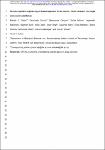Thông tin tài liệu
Full metadata record
| DC Field | Value | Language |
|---|---|---|
| dc.contributor.author | Yadav, Manish K. | - |
| dc.date.accessioned | 2023-09-21T02:20:12Z | - |
| dc.date.available | 2023-09-21T02:20:12Z | - |
| dc.date.issued | 2023 | - |
| dc.identifier.other | OER000002361 | vi |
| dc.identifier.uri | http://dlib.hust.edu.vn/handle/HUST/23203 | - |
| dc.description.abstract | The Hydroxycarboxylic acid receptor 2 (HCA2), also known as the niacin receptor or GPR109A, is a prototypical G protein-coupled receptor that plays a central role in the inhibition of lipolytic and atherogenic activities in our body. Interestingly, GPR109A activation also results in vasodilation that is linked to the side-effect of flushing associated with dyslipidemia drugs such as niacin. This receptor continues to be a key target for developing novel pharmacophores and lead compounds as potential therapeutics in dyslipidemia with minimized flushing response, however, the lack of structural insights into agonist-binding and receptor activation has limited the efforts. Here, we present five different cryo-EM structures of the GPR109A-G-protein complexes with the receptor bound to dyslipidemia drugs, niacin or acipimox, non-flushing agonists, MK6892 or GSK256073, and recently approved psoriasis drug, monomethyl fumarate (MMF). These structures allow us to visualize the binding mechanism of agonists with a conserved molecular interaction network, and elucidate the previously lacking molecular basis of receptor activation and transducer-coupling. Importantly, cellular pharmacology experiments, guided by the structural framework determined here, elucidate pathway-selective biased signaling elicited by the non-flushing agonists. Finally, taking lead from the structural insights, we successfully engineered receptor mutants via single amino acid substitutions that either fail to elicit agonist-induced transducer-coupling or exhibits G-protein signaling bias. Taken together, our study provides previously lacking structural framework to understand the agonist-binding and activation of GPR109A, and opens up the possibilities of structure-guided novel drug discovery targeting this therapeutically important receptor. | vi |
| dc.description.uri | https://www.biorxiv.org/content/10.1101/2023.07.03.547505v1.full.pdf+html | vi |
| dc.format | vi | |
| dc.language.iso | en | vi |
| dc.publisher | bioRxiv | vi |
| dc.rights | Attribution-NonCommercial-NoDerivs 3.0 Vietnam | * |
| dc.rights.uri | http://creativecommons.org/licenses/by-nc-nd/3.0/vn/ | * |
| dc.subject | axit amin | vi |
| dc.subject | G-protein | vi |
| dc.subject | rối loạn | vi |
| dc.subject | lipid máu | vi |
| dc.subject | thụ thể niacin | vi |
| dc.subject | cấu trúc | vi |
| dc.subject.lcc | TP650 | vi |
| dc.title | Structure-guided engineering of biased-agonism in the human niacin receptor via single amino acid substitution | vi |
| dc.type | Journal Article | vi |
| dc.description.note | CC BY-NC-ND 4.0 | vi |
| Appears in Collections: | OER - Kỹ thuật hóa học; Công nghệ sinh học - Thực phẩm; Công nghệ môi trường | |
Files in This Item:
This item is licensed under a Creative Commons License


